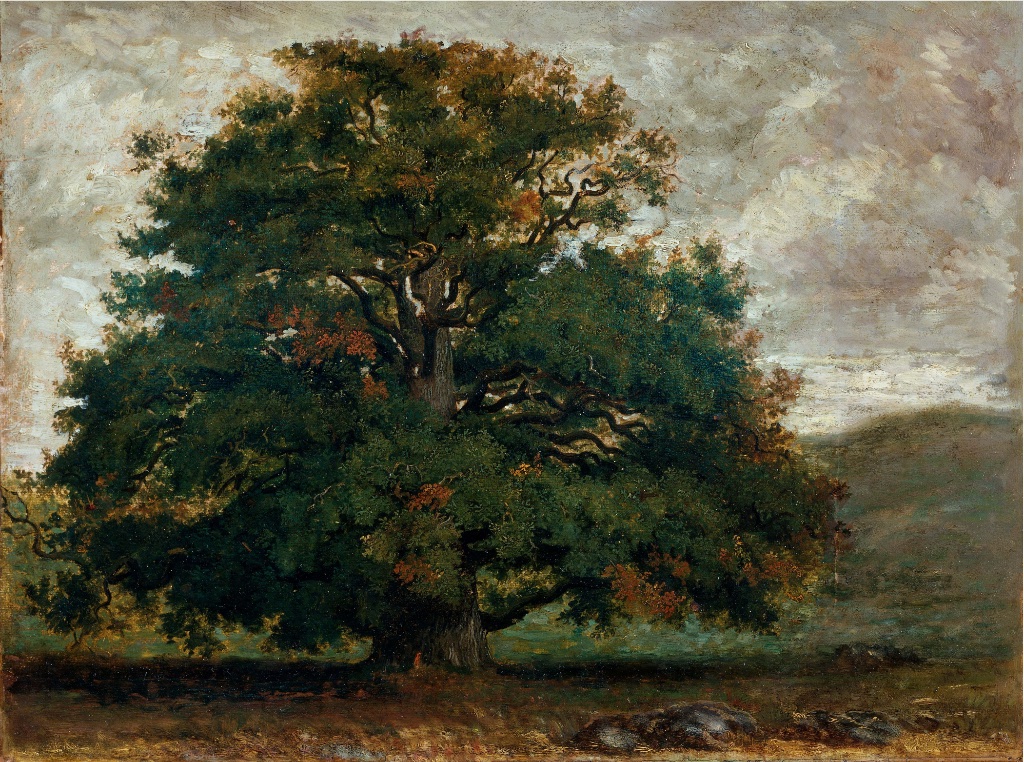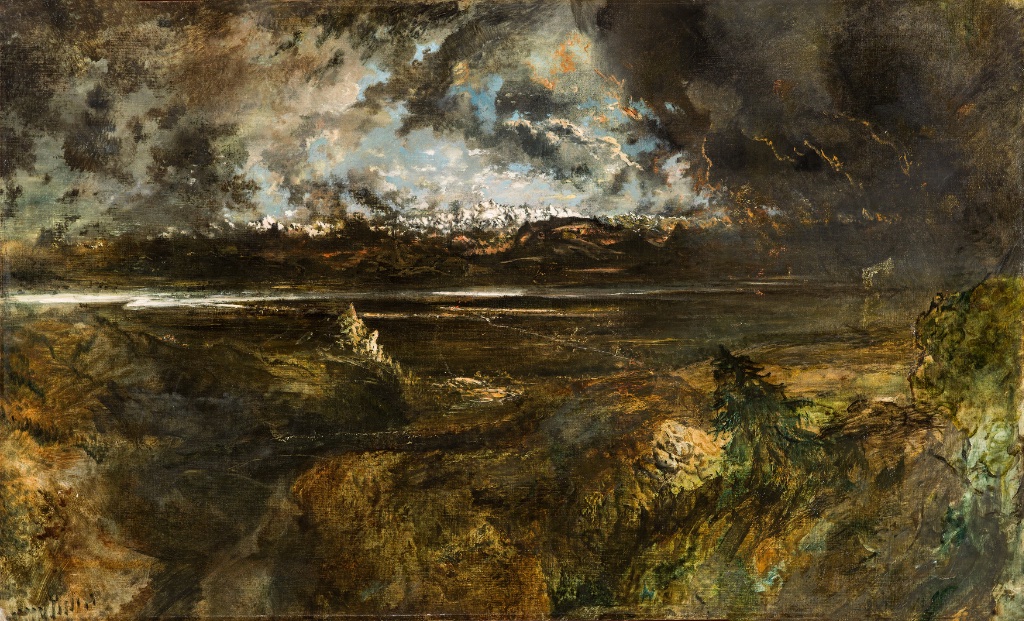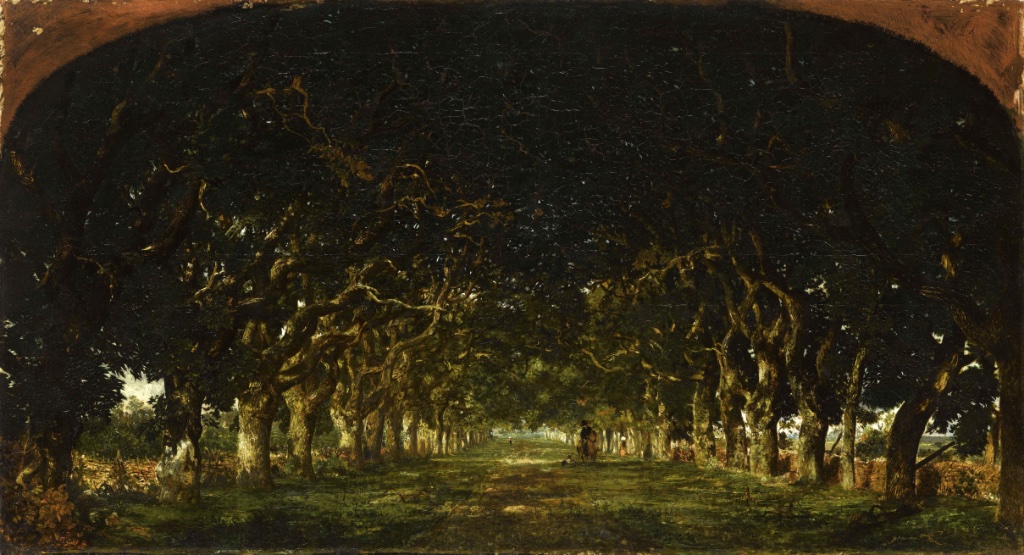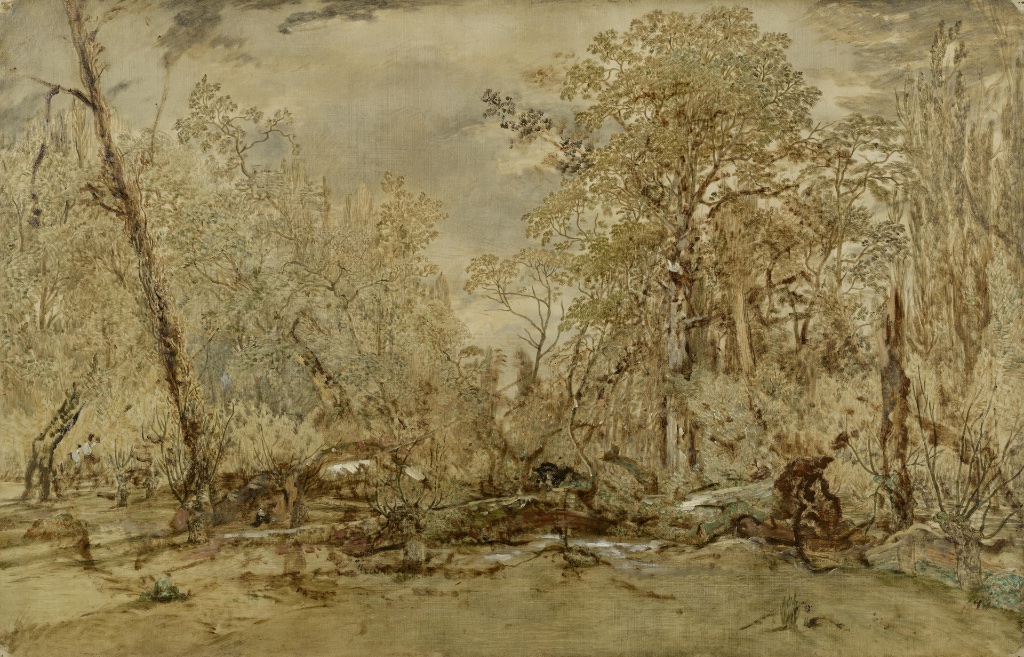
It’s hard to imagine a painter of trees and other manifestations of nature being considered a wild-eyed radical, but back in 1830 the idea of painting a landscape just for the sake of painting a landscape was academic-art-world heresy. Being dubbed a Romantic at a time when hard-nosed naturalism reigned didn’t help. Such was the case for Théodore Rousseau (1812-1867), the now-revered Barbizon School landscape painter who is the subject of a retrospective at Paris’s Petit Palais: “Théodore Rousseau: La Voix de la Forêt.”
Known as “le grand refusé,” Rousseau had eight paintings rejected by the Paris Salon between 1836 and 1841, including one of his masterpieces, “The Descent of the Cattle in the Haut-Jura Mountains” (1834-35), after which he stopped submitting works for many years. The critical tide finally turned in 1849, when three of his paintings were accepted.
What was so shocking about his work? Well, for one thing, he painted landscapes and forest scenes devoid (mostly) of human figures. A good academic painting would have at least a few scantily clad mythical figures dancing around or bathing in the foreground, or Cain and Abel (also scantily clad) trying to kill each other, as in a work shown here by Rousseau’s teacher, Jean-Charles-Joseph Remond. Rousseau was far more likely to put cows in his pictures than people, drawing the viewer into the landscape rather than using it as a stage for biblical, historical or mythological figures.
And, rather than looking to the stuck-in-the-mud academic painters for his model, Rousseau took inspiration from the British landscape painter John Constable and the 17th-century Dutch landscape painters.
An early “tree hugger,” Rousseau once claimed that he could hear the voices of the trees. As the world changed and the difficulties he encountered in his early days as an artist disappeared, he contributed to and benefitted from the rise of the forest as a destination for pleasure seekers during the first half of the 19th century. In 1842, the world’s first marked walking trails were created in the Fontainebleau Forest by nature lover Claude-François Denecourt and “decorated” with fountains and grottoes. Marvelously, today’s hikers still come across these surprising little human interventions. By 1849, “pleasure trains” were speeding Parisians to Fontainebleau for what we would call today “forest bathing.

The exhibition includes several spectacular large-format paintings. One is “Mont-Blanc Seen from La Faucille, Storm Effect” (begun in 1834), a statement of the wild majesty of nature, with its snowcapped mountains in the distance menaced by black storm clouds and the rugged Jura Mountains in the foreground. It was apparently painted mostly in the studio and kept there over the years and perhaps retouched by the artist, who found it difficult to declare a painting done and was often criticized for the “unfinished” look of his work.

Another painting that was the subject of great controversy is “Avenue of Chestnut Trees,” begun in 1837. It was refused entry to the 1841 Paris Salon (thereby scuttling its purchase by the state, which had already been arranged by Rousseau’s champions George Sand and Eugène Delacroix). The dark avenue of trees forms a canopy, inviting viewers to venture into the cool tunnel it forms and drawing them through it to the light at the other end.
One of Rousseau’s few pictures to include humans is the protest painting “The Massacre of the Innocents” (1847), which shows loggers cutting down a stand of oak trees in the Fontainebleau Forest. Thanks to the lobbying of Rousseau and others for the protection of the forest, the government created the world’s first natural reserve there in 1853 and expanded it in 1861 and 1892.
Unfortunately, Rousseau didn’t have much time to enjoy his hard-won popularity and prosperity. He died fairly young, at the age of 55. Let’s hope that he was able to draw enough solace from the forest he so loved to make up for some of the pain caused by official approbation, by the attacks on the forest and by his wife’s and his own ill health. Today, thanks to him and his fellow ecologists before the word existed, the Forêt de Fontainebleau is still there to provide Parisians with the solace and beauty of both this “exceptional forest” (only a 40-minute train ride from Paris) and his depictions of it.
Note: Click on the images to enlarge them.
See our list of Current & Upcoming Exhibitions to find out what else is happening in the Paris art world.
Favorite
